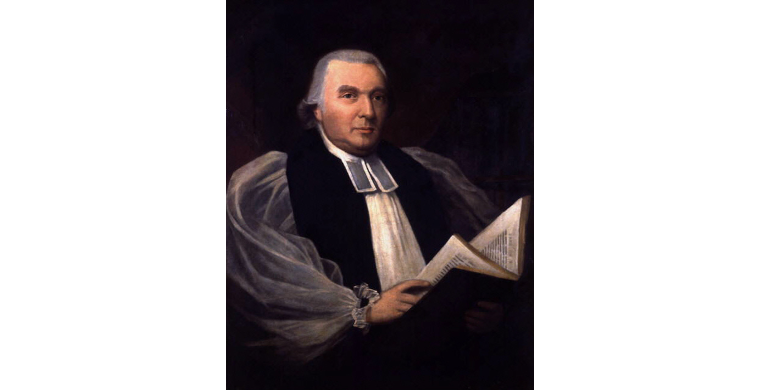SAMUEL SEABURY
By Chuck Collins
www.virtueonline.org
November 14, 2023
SAMUEL SEABURY was consecrated the first bishop of the Protestant Episcopal Church in the United States on November 14, 1784. Unlike William White, the second consecrated bishop who was a proponent of the American Revolution and a chaplain for the Continental Congress, Seabury was a British loyalist who opposed the Continental Congress. For almost 200 years the Church of England in America was without a resident bishop when Seabury was selected by the clergy of Connecticut to sail to London to be consecrated, but after a year there, the bishops of the Church of England determined to not consecrate him, in part because, as an American citizen, he could not take the oath of allegiance to the British crown, and in part because the laity of Connecticut had no say in his election.
Determined to be a bishop, he went to Scotland to be made bishop in the Episcopal Church in Scotland November 14, 1784. The Episcopal Church in Scotland, called the Scottish Episcopal Church today, became an independent church from the Church of Scotland after the Glorious Revolution largely over the form of church government each preferred and their two different forms of worship. Both churches are Protestant, but the Scottish Episcopal Church chose episcopal oversight (bishops) over presbyterian elders and superintendents. The Scottish Episcopal Church, of which Seabury was made bishop, was heavily influenced by the high churchmanship of Archbishop William Laud (Laud's Liturgy, 1637) that was pushed on Scotland by England. Laud and his liturgy was widely rejected by the Scots for being "popish." In exchange for his consecration, Bishop Seabury agreed to introduce certain elements of the Scottish Prayer Book into the Episcopal Church.
Some say that Seabury liked the dignity and status of his office too much, signing his first letter to the Connecticut clergy, "Samuel, by divine permission, Bishop of Connecticut," and other letters "Bishop of All America" (imitating "The Archbishop of Canterbury, the Primate of All England"). He stubbornly opposed any "lay" involvement in church leadership (General Conventions), until he finally conceded this point for the sake of church unity.
Seabury was a high churchman sacramentalist who introduced into the American Prayer Book an "epiclesis" (prayer invoking the Holy Spirit to make the bread and wine of Communion to be the body and blood of Christ) from the Prayer Book of the Scottish Church. This was obviously a contrary practice and theology from the 1662 Book of Common Prayer. The epiclesis was dropped from Anglican observance after the 1549 Prayer Book by Thomas Cranmer and the English reformers because it suggests the Roman Catholic idea that there is a moment of consecration when the bread and wine become the actual body and blood of Christ, a theology foreign to our heritage. In spite of his high churchmanship, Seabury still held that the real presence of Christ in the eucharist is a spiritual, not corporeal, presence, and that apostolic succession was good for the order of ministry to symbolize the succession of apostolic teaching as St. Paul taught Timothy (2 Tim 2:2). Our first American bishop stood for strong, autocratic episcopal (bishops) control, and for the diocese as the main unit of ministry rather than the local congregation. Like many who followed in the path of William Laud, Seabury was an ardent Arminian who urged the Episcopal Church to simply drop the Calvinistic Anglican formularies (the Thirty-nine Articles of Religion) as American's confessional standard. After Seabury died in 1796, the newly formed Protestant Episcopal Church officially adopted the Articles as its theological standard at the General Convention of 1801.














